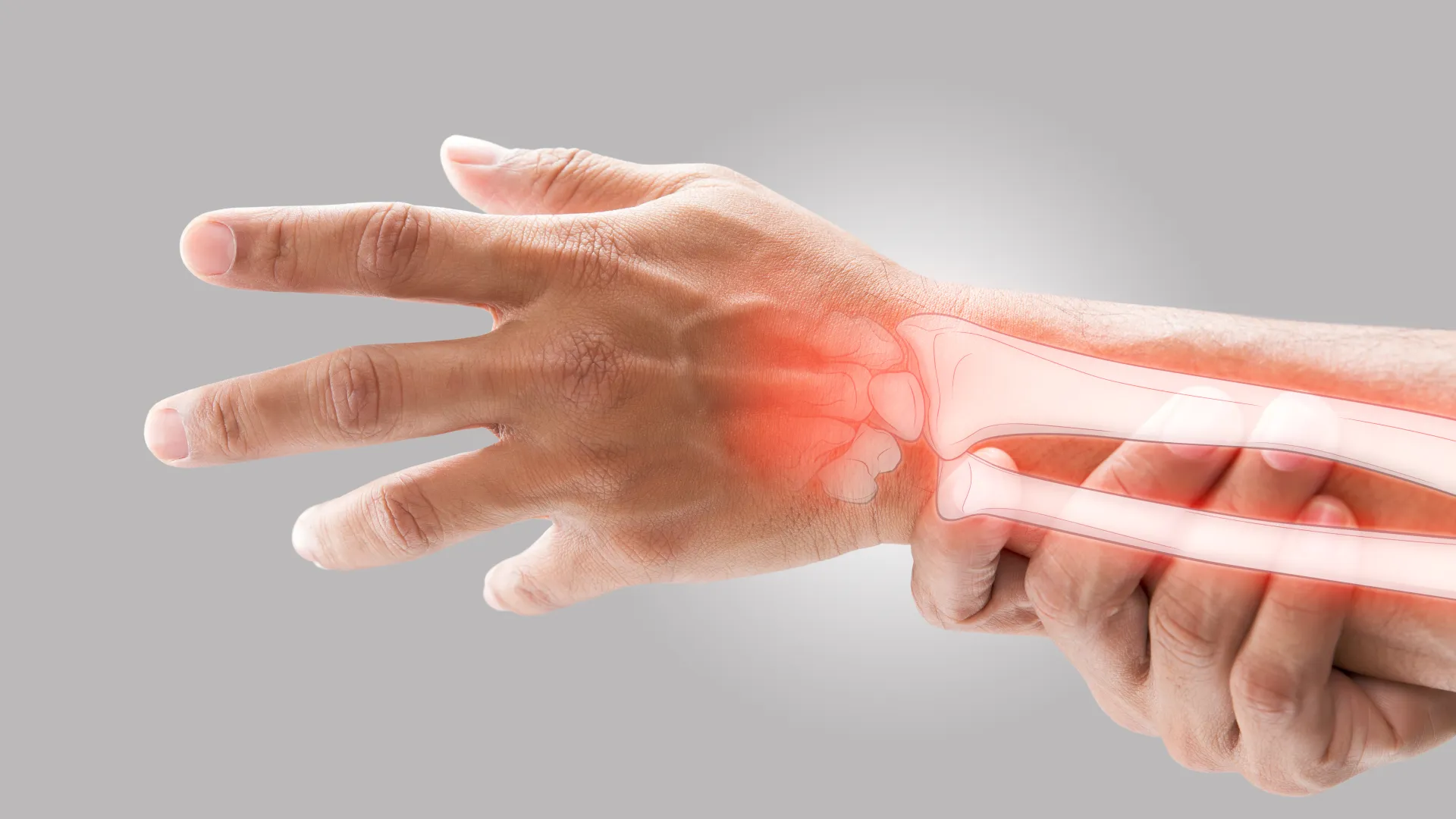
Wrist Fractures
Formally known as distal radius fracture, this injury is very common and represents up to 15-20% of all fractures in adults.
Risk Factors
-
Older Adults
-
Female
-
Sports
OrthoSouth Physicians Can Treat and Rehabilitate Your Wrist Fracture
and Get You Back to What Matters
Symptoms
- Pain and swelling at wrist
- Deformity at wrist
- Limited wrist motion
- Skin bruising and abrasion/laceration
Diagnostic Testing
X-rays and possible CT are usually obtained to diagnose a broken or fractured wrist.
The goal of treatment is to have the broken wrist heal in good position and gain back functional motion to the hand, wrist, and forearm.
Non Operative Treatment Options
Fractures that are not significantly displaced may be treated without surgery. Splints and casts are typically used but bracing may also be an option. The majority of distal radius and ulna fractures heal in 6 weeks.
Surgical Treatments
Fixation using pins called kwires, plates and screws, and possible exteneral fixators may be used depending on the type of fracture present.
- Closed reduction and pinning: may be performed with temporary pins that are removed once the fracture is healed.
- Open reduction and fixation: the surgeon makes an incision and directly visualizes the fracture. The bones pieces are then placed and held in good position by either pins or a plate(s) and screws.
- External fixation: Rarely, external pins are placed that are connected to bar(s) outside the skin. This method of fixation is usually reserved for severely open fractures and unstable patient's in trauma setting.
More Information
Pickleball and Hand Therapy
Pickleball and Hand Therapy Pickleball is a rapidly growing sport in the United States, with new complexes and regular tournaments appearing across the country - including right here in the 901 and surrounding...
11 FAQs About Hand and Wrist Conditions - And Their Answers
What are the most common causes of wrist pain? Wrist pain can result from various factors, including injuries, repetitive strain, arthritis, and nerve compression. Consultation with an orthopedic specialist can...
Basal Joint Arthritis
Basal Joint Arthritis Basal joint arthritis, also known as thumb arthritis or carpometacarpal (CMC) joint arthritis, is a condition that affects the joint at the base of the thumb. It causes pain, stiffness, and...
Mallet Finger
Mallet Finger Mallet finger is an injury that occurs when the tendon that straightens the finger (extensor tendon) is damaged or torn. This results in the inability to fully extend the fingertip. Here’s some...
Wrist Pain: Causes & Strategies
Wrist pain can affect many people across Memphis and the Mid-South, and it often varies in how it feels. Some describe it...
Dupuytren's Contracture
Dupuytren’s Contracture A common diagnosis seen by hand surgeons and therapists is Dupuytren’s Contracture. Often, patients describe “curled” or “hooked” finger(s) that they cannot straighten. This...
Let's Get Back to What Matters
After Hours & Urgent Care
